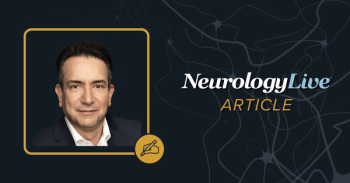
Tactics for Recognizing, Addressing Stigma in Epilepsy: Joan K. Austin, PhD, RN, FAAN
The Distinguished Professor Emerita at Indiana University School of Nursing spoke on key takeaways for clinicians when it comes to helping tackle stigma, as well as the need to educate patients and their families about the condition overall. [WATCH TIME: 4 minutes]
WATCH TIME: 4 minutes
“There are 2 things that clinicians need to keep in mind.[First], that they need to realize that stigma is common in people with epilepsy; and second, that many of their patients will experience stigma, regardless of whether they mention it or not.”
For 1 in 3 patients with epilepsy, the effects of stigma will be considered worse than seizures, the primary symptom of the condition. The issue is so pressing, the International League Against Epilepsy established a task force, which recently completed reviews on felt and enacted stigma, as well as screening instruments and instruments to address this stigma.1,2
Joan K. Austin, PhD, RN, FAAN, Distinguished Professor Emerita, Indiana University School of Nursing, commented on these publications in conversation with NeurologyLive®, describing the severity of stigma and the negative consequences it can have for the daily lives of patients. Not only can it create psychosocial issues and lower quality of life, but it can also lead to patients not wanting to disclose to others that they have epilepsy, further perpetuating the stigma of shame.
Assessing stigma is key for clinicians, which can be as simple as just asking patients if they feel they are being treated differently due to their condition, Austin said. Tools described in the recent publications can be employed, specifically, a 3-item scale that asks patients if they feel others are uncomfortable around them, if they feel they are being treated as inferior, or if they feel like others avoid them due to epilepsy. Educating patients and families is another key step, she said, as research shows that those who are most knowledgeable about their condition and how to handle their seizures face the least amount of stigma.
REFERENCES
1. Kwon, C, Jacoby A, Ali A, et al. Systematic review of frequency of felt and enacted stigma in epilepsy and determining factors and attitudes toward persons living with epilepsy—Report from the International League Against Epilepsy Task Force on Stigma in Epilepsy. Epilepsia. 2022;63(3):573-597. doi:10.1111/epi.17135
2. Austin JK, Birbeck G, Parko K, et al. Epilepsy-related stigma and attitudes: Systematic review of screening instruments and interventions–Report by the International League Against Epilepsy Task Force on Stigma in Epilepsy. Epilepsia. 2022;63(3):598-628. doi:10.1111/epi.17133
Newsletter
Keep your finger on the pulse of neurology—subscribe to NeurologyLive for expert interviews, new data, and breakthrough treatment updates.



























